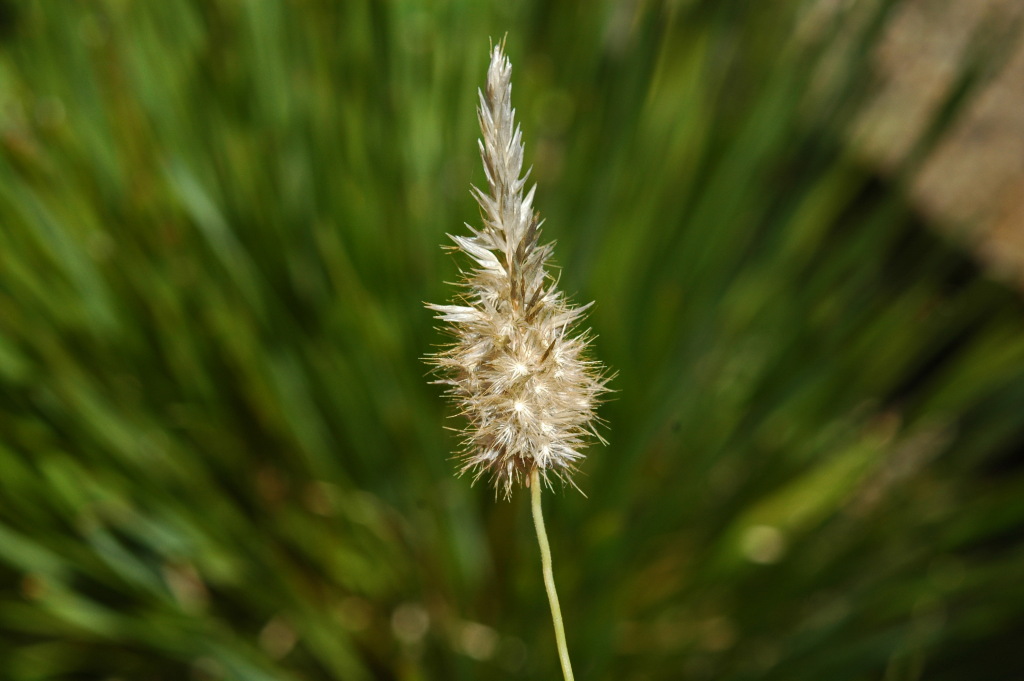Enneapogon nigricans
(R.Br.) P.Beauv. Dark Nineawn-grassTufted perennial, sometimes slightly woolly at base, culms simple, densely glandular-pubescent below panicle, erect, to 55 cm high, nodes densely bearded. Leaves scabrous and pubescent with simple and glandular hairs; blade flat to closely inrolled, to 15 cm long and 2.5 mm wide; ligule to c. 0.5 mm long. Inflorescence a dense, ovate to oblong, spike-like panicle 3–7 cm long and 1–2 cm wide, usually lead-coloured. Spikelet 3–4-flowered, with 1(–2) fertile; glumes 5–9-nerved, pubescent, lanceolate to narrowly ovate, 2.5–7 mm long, sub-equal, or the upper slightly longer; body of lower lemma hairy, membranous to papery with raised nerves, 2–3 mm long, margins ciliate; awns 4–8 mm long; palea of lower floret equal to or slightly exceeding body of lemma, shortly hairy. Flowers Aug.–May.
LoM, MuM, Wim, GleP, VVP, VRiv, MSB, MuF, GipP, OtP, Gold, CVU, DunT, NIS, EGU, MonT. Also SA, Qld, NSW. Scattered through drier grasslands and grassy woodlands, mostly in the central part of the State, with outlying occurrences in the north-west, e.g. Wycheproof, Chinkapook, Nhill and Dimboola (but apparently not collected from these areas this century), small remnant populations near Melbourne (e.g. Sunbury and the You Yangs) and in the rain-shadow areas of Gippsland (Swifts Creek, Tubbut, Bendoc etc.). Occurs mostly on shallow soils over a variety of rock substrates (e.g. limestone in the mallee, granite, basalt and sediments elsewhere).
Walsh, N.G. (1994). Poaceae. In: Walsh, N.G.; Entwisle, T.J., Flora of Victoria Vol. 2, Ferns and Allied Plants, Conifers and Monocotyledons, pp. 356–627. Inkata Press, Melbourne.
 Spinning
Spinning



